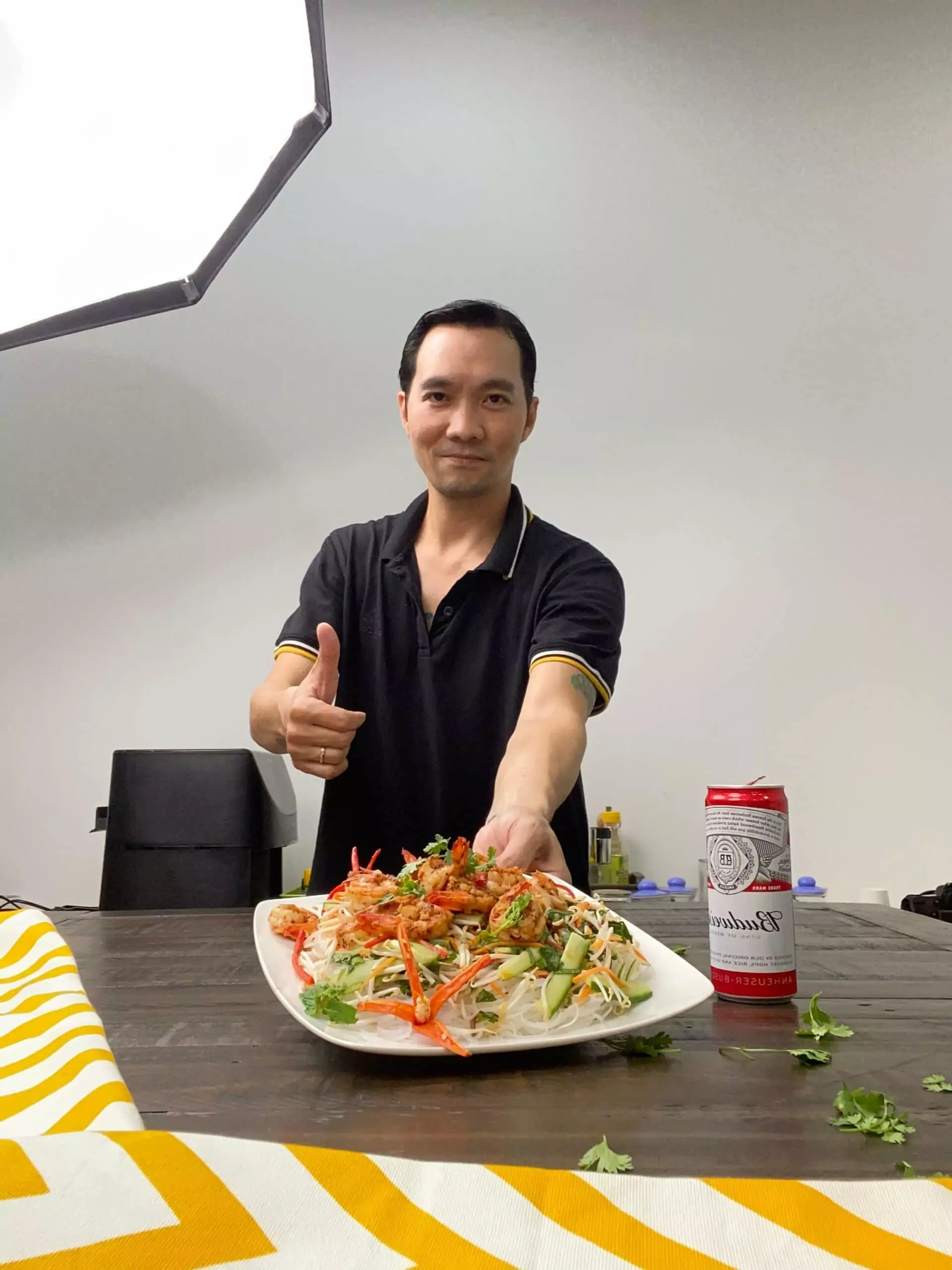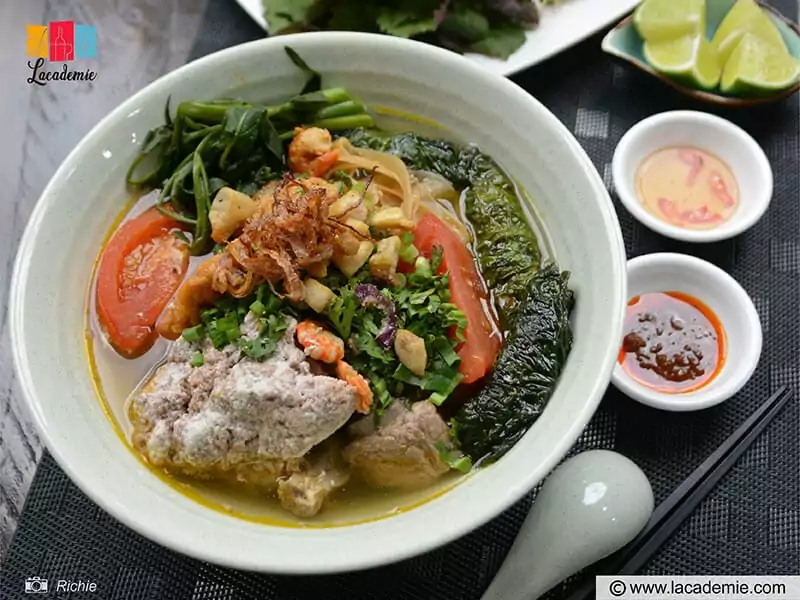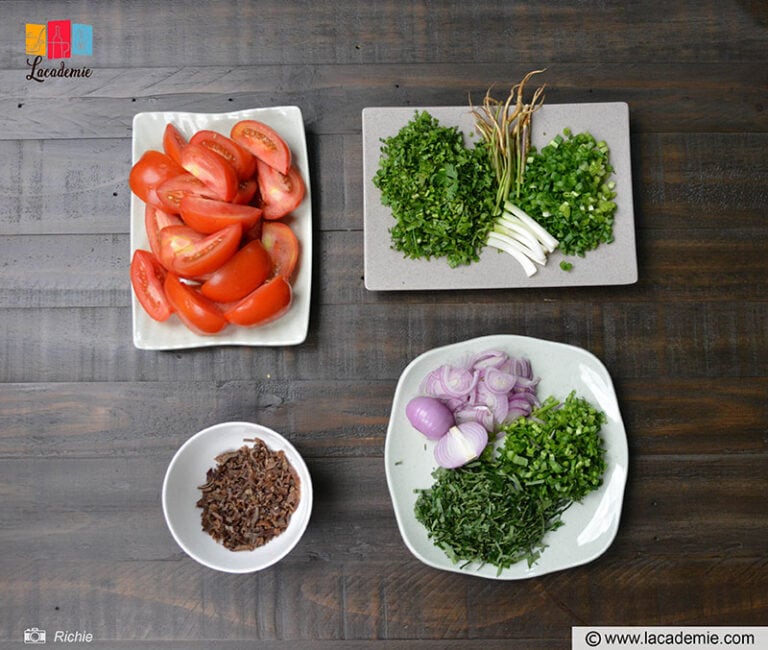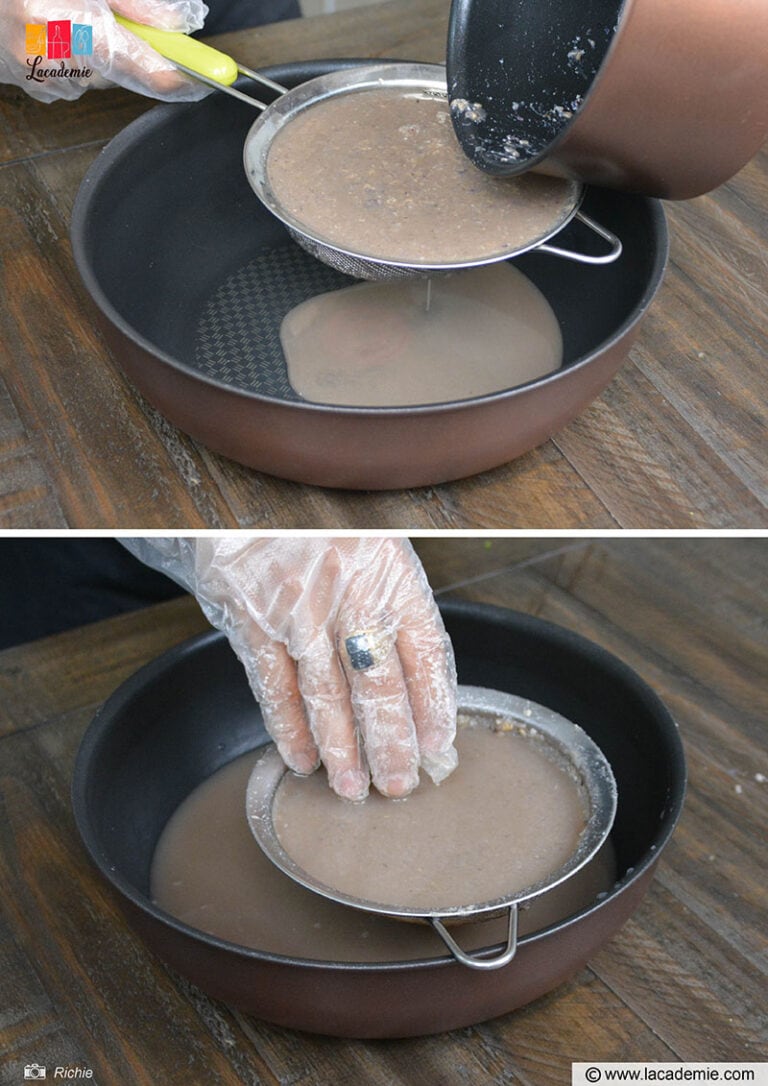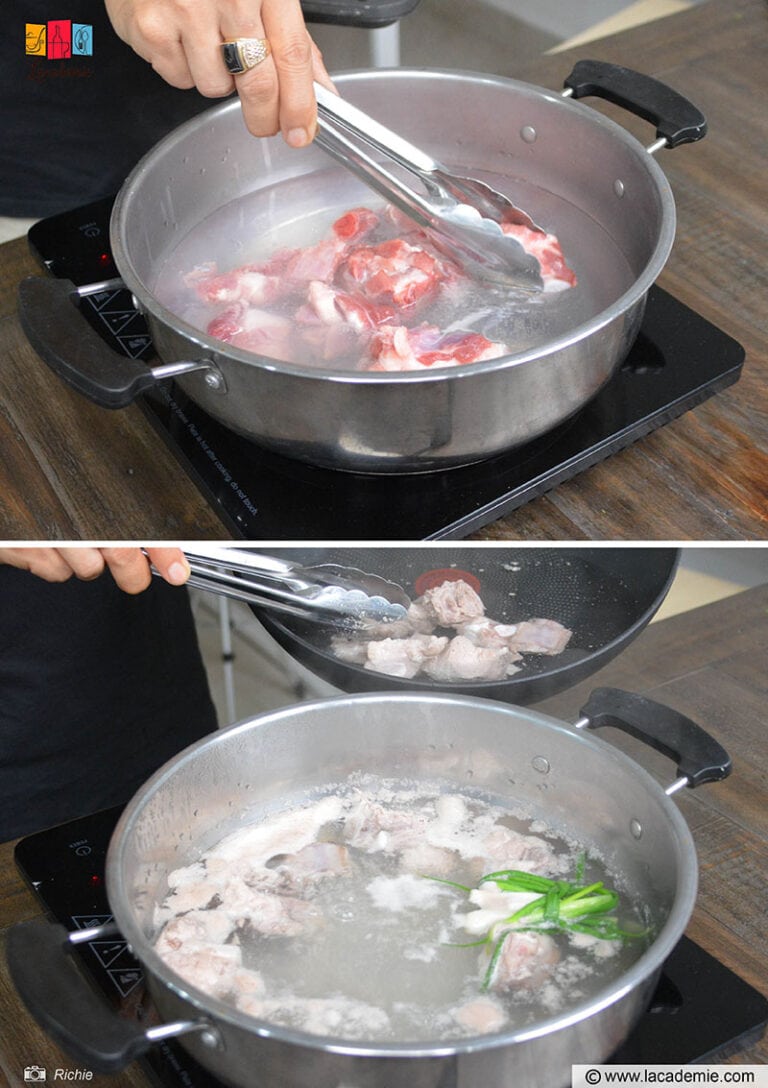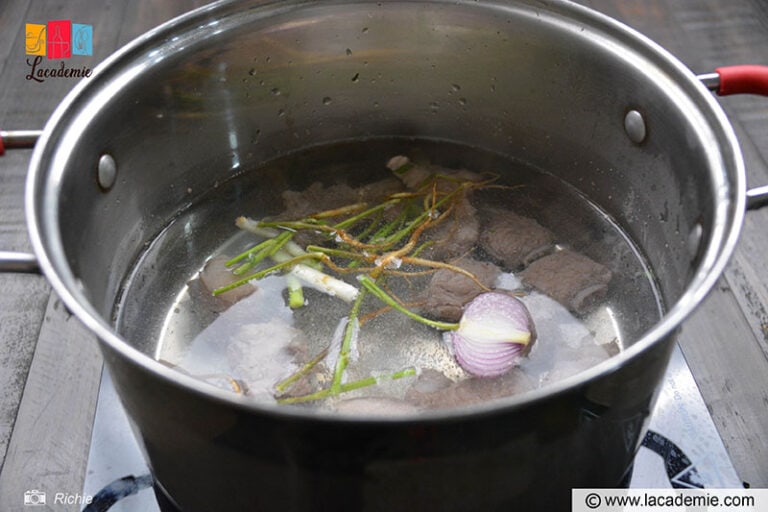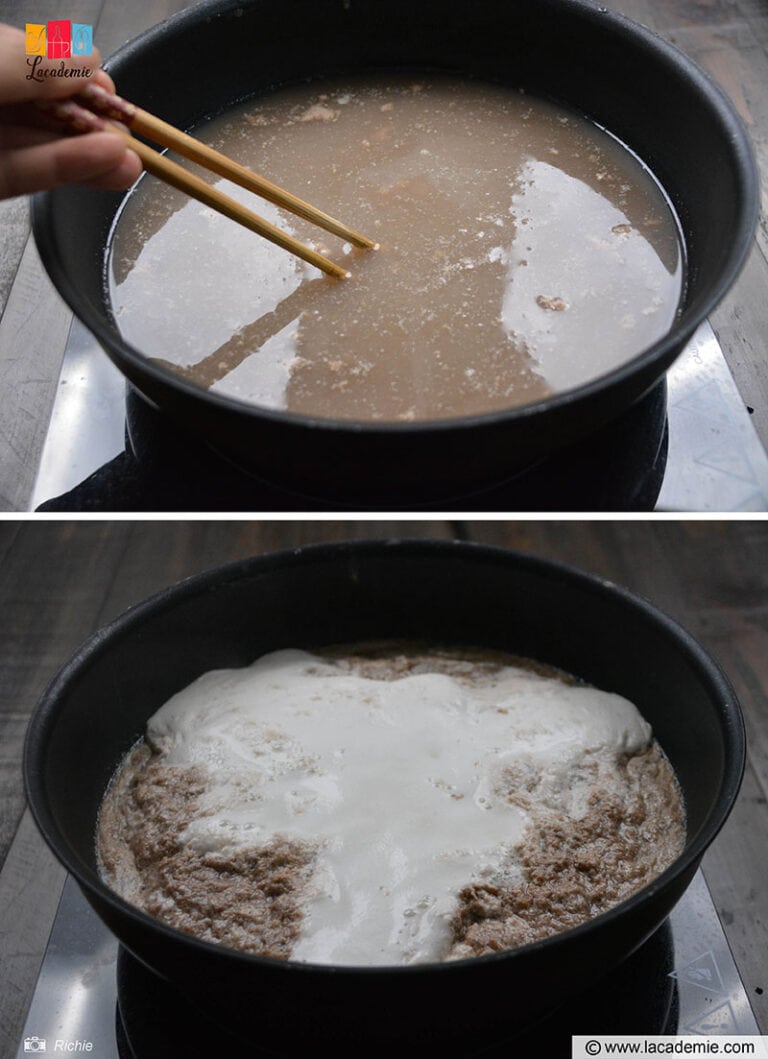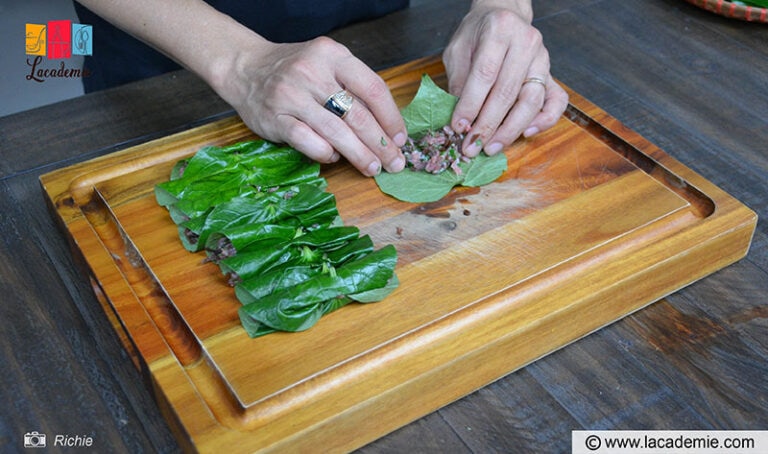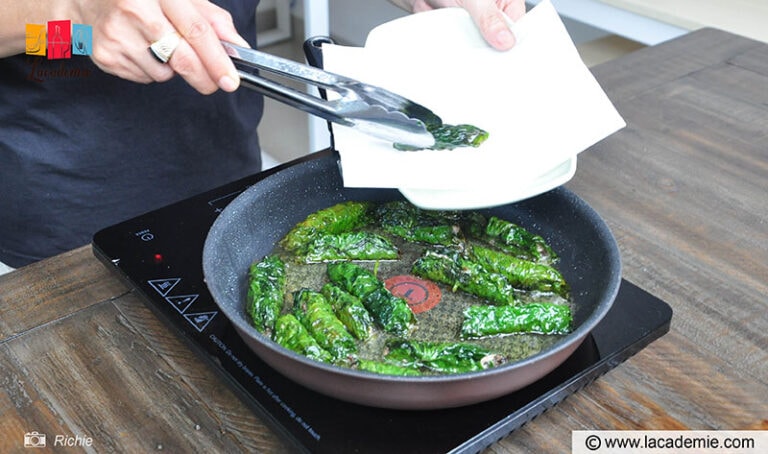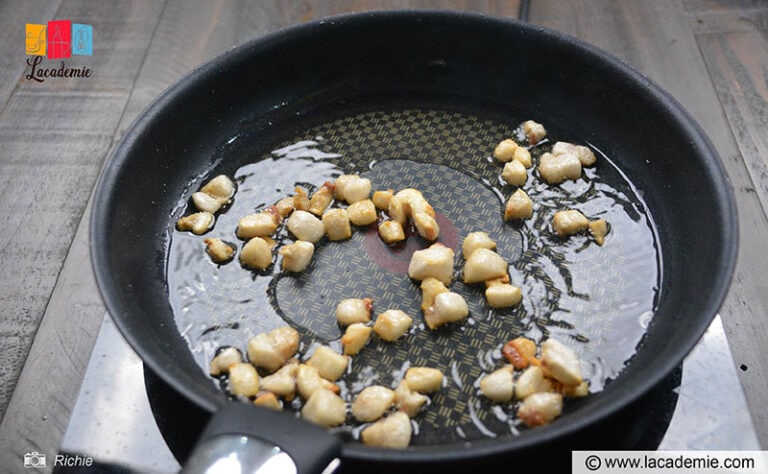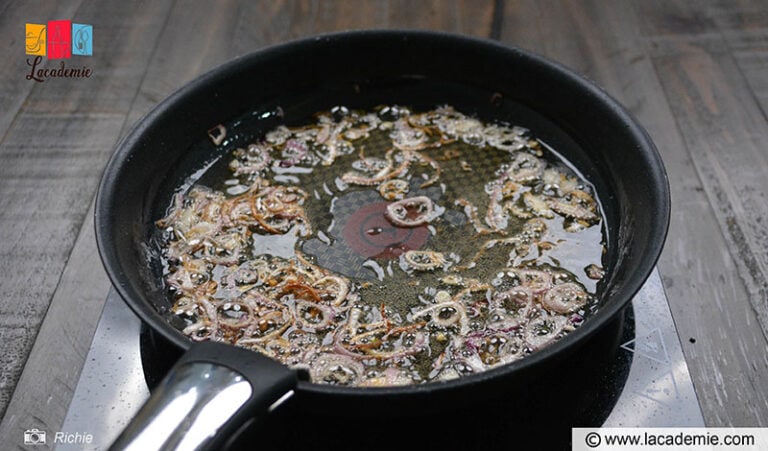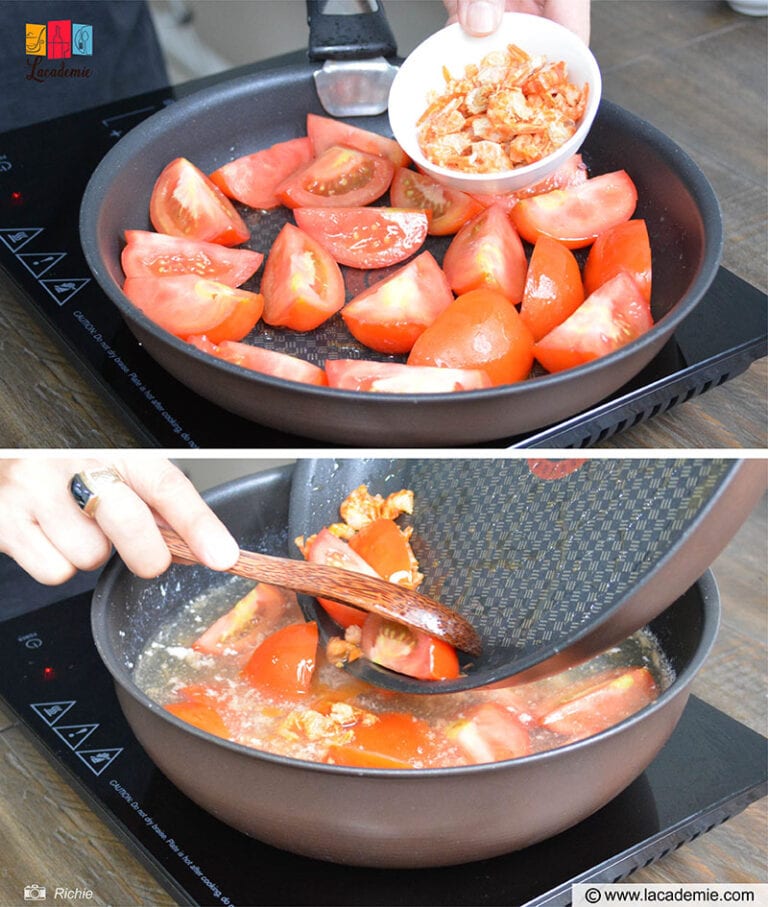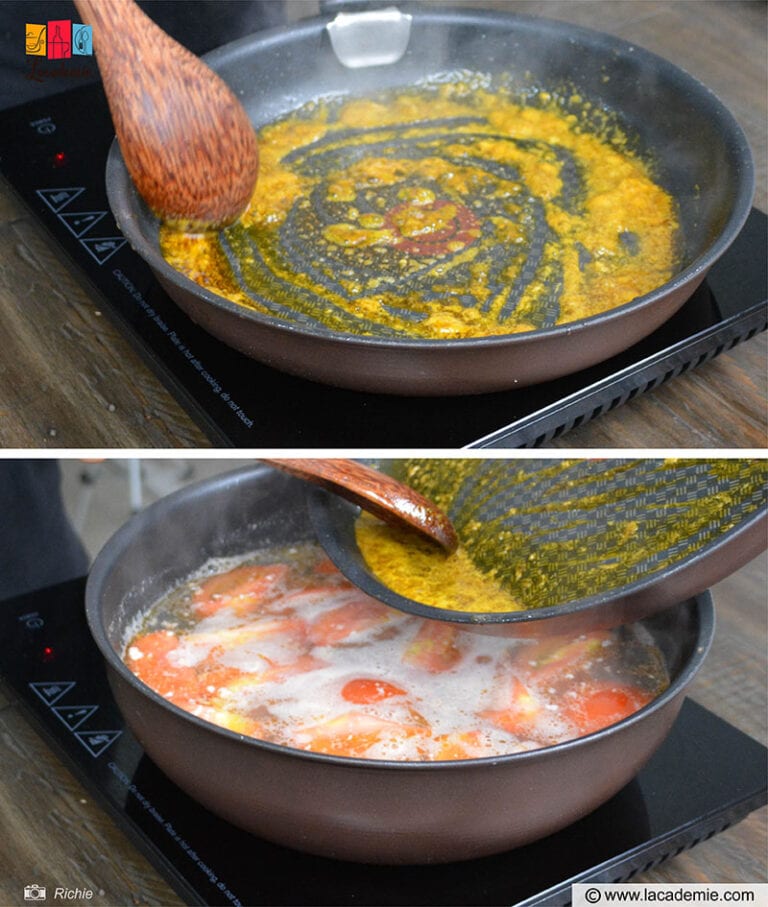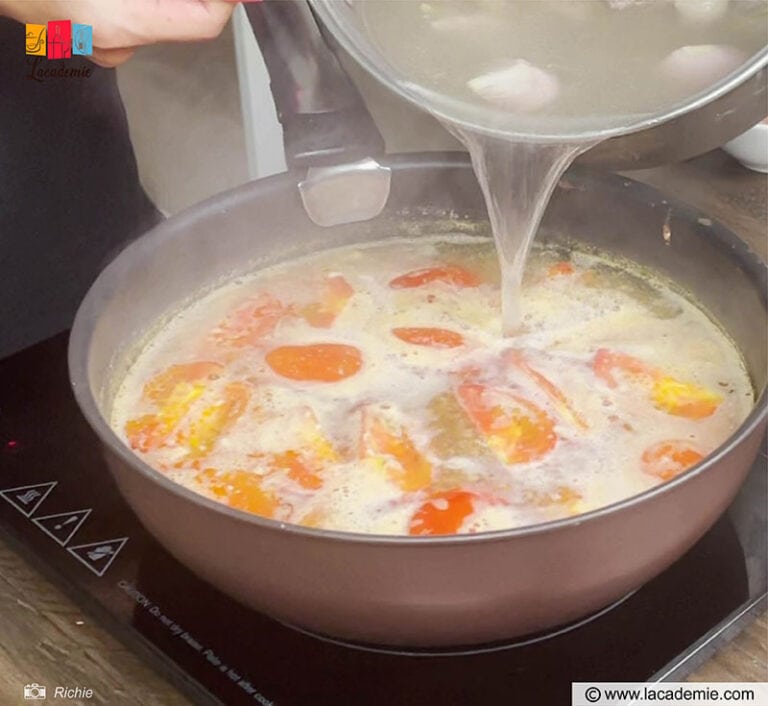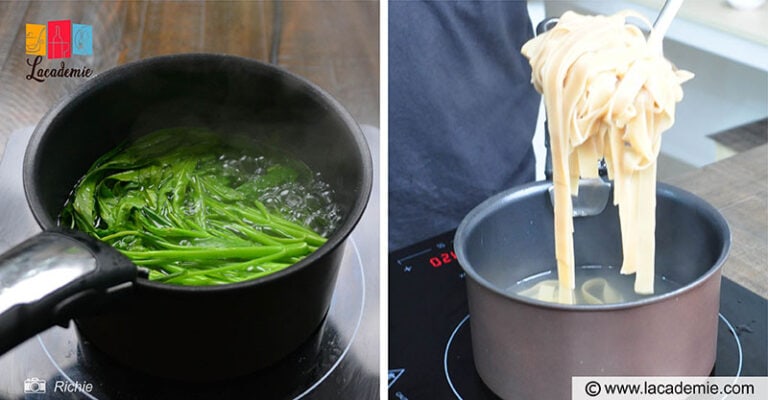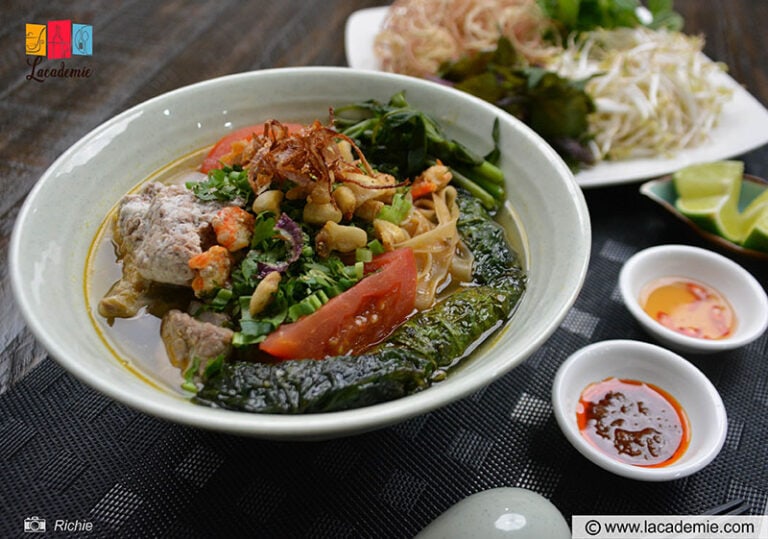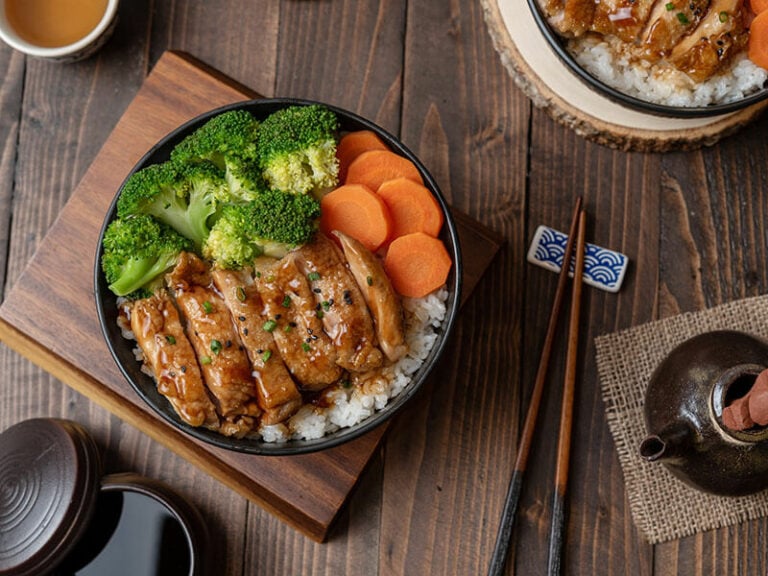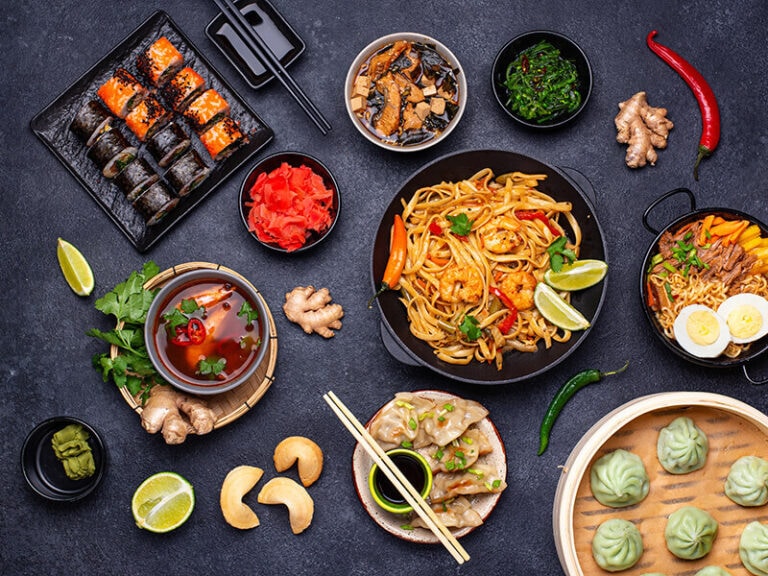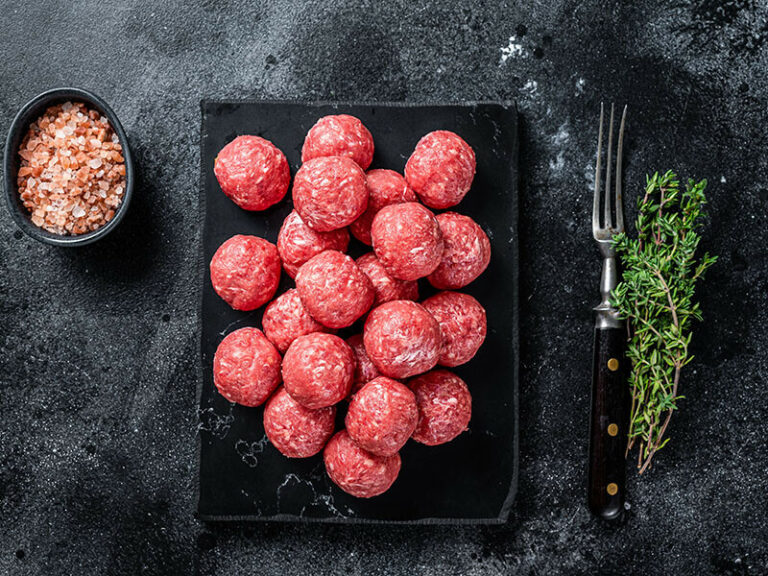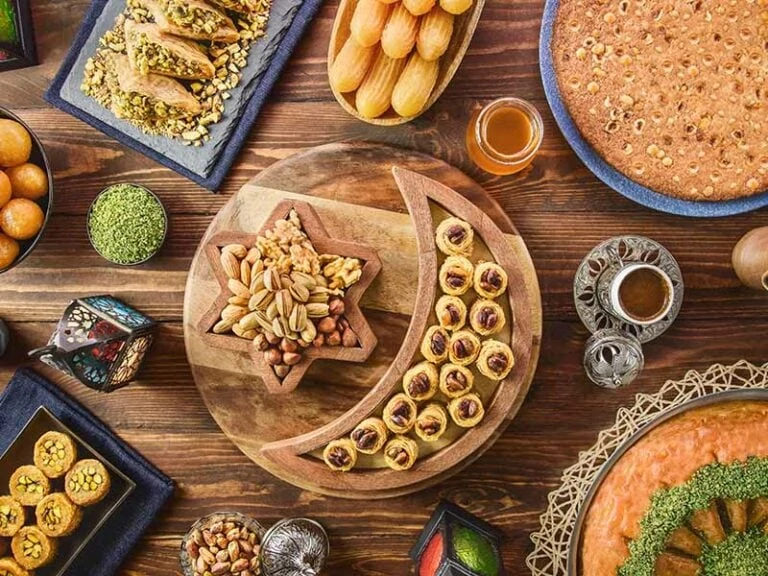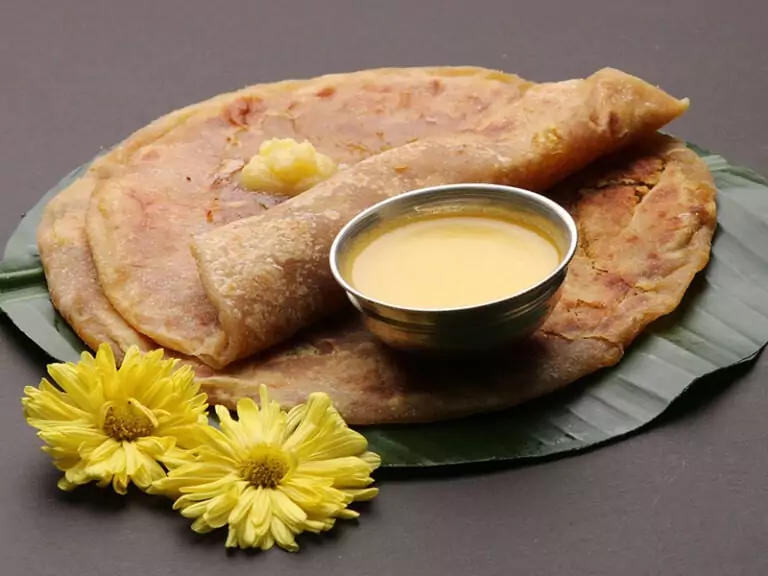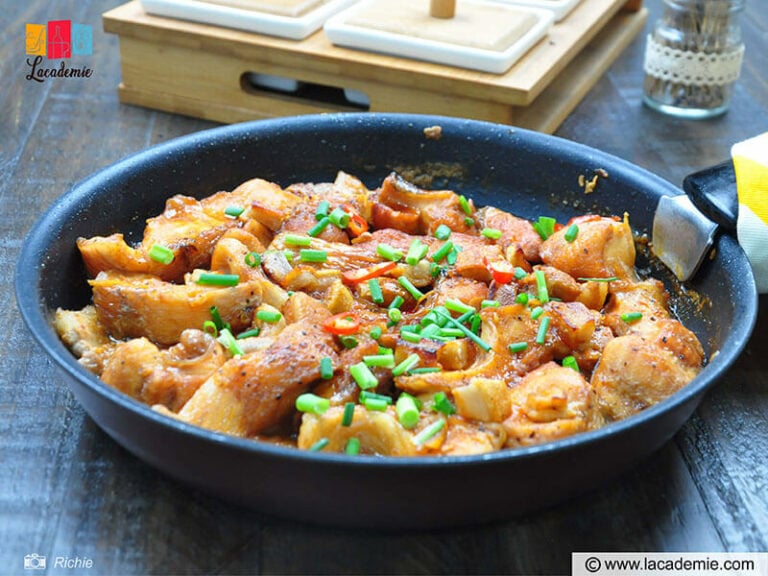Vietnamese rice noodle soup (Banh Da Cua) with crab meat is a hearty delicacy with a rich and distinct flavor from minced crab, betel leaf rolls, and fish cakes. In addition to the incredible taste, this dish will mesmerize you with its vivid appearance.
If you’ve tried Southern Vietnamese dishes, such as Bun Mam, and wonder what some iconic recipes of the Northern region taste like, Banh Da Cua is an excellent starting point. Explore this amazing dish today!
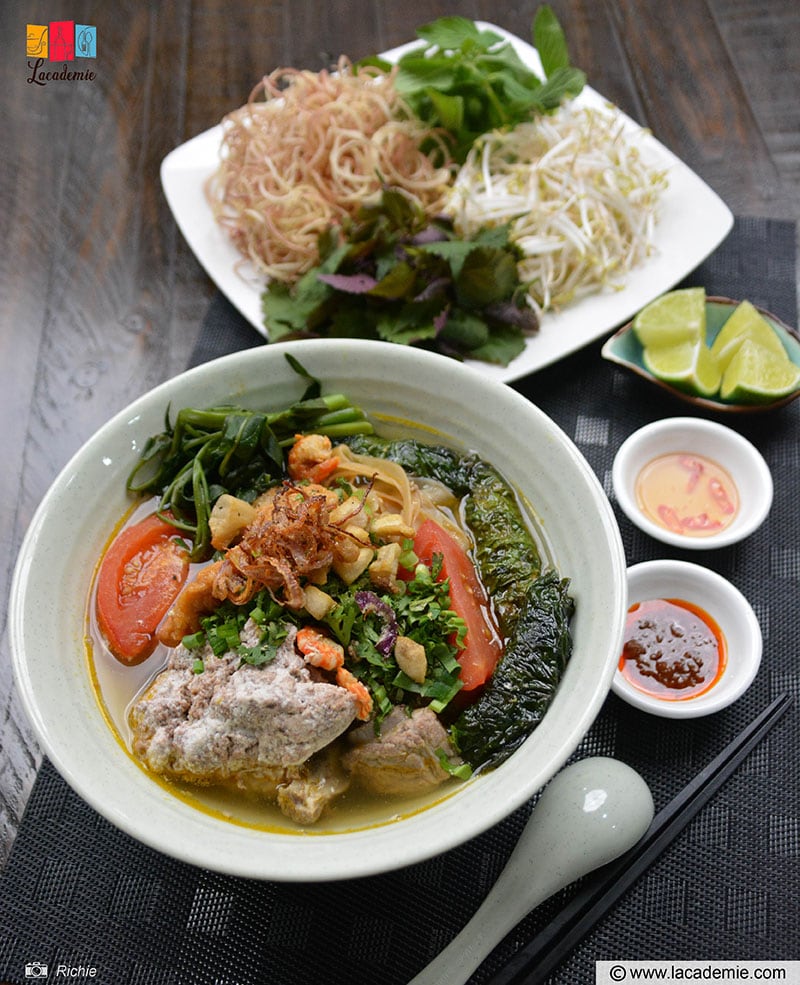
What Exactly Is Banh Da Cua?
“Bánh Đa Cua” is the staple in the cuisine of Hai Phong, a province in the Red River Delta area of Northern Vietnam. The essential ingredients in this dish include crab, pork wrapped in betel leaves (“chả lá lốt”), fish cakes, fresh vegetables, and, most importantly, Banh Da noodles.
Unlike other kinds of rice noodles in Vietnamese cuisine, Banh Da noodles have a reddish color that comes from the juice extract of “Gấc”, a unique Vietnamese fruit. Their strands are also wider than that of Pho or Hu Tieu noodles.
For people in Hai Phong, Banh Da Cua is more than just a bowl of noodle soup. It’s the combination of the modern and traditional cooking styles of this province. With its bright colors and remarkable flavor, this delicacy can capture the heart of any foodie.
Tools
This recipe doesn’t ask for any hard-to-find or fancy kitchen tools. However, note that you will need more than one pot.
- Large/small pots: You’ll need different pots to cook the pork broth and the crab broth.
- Pan: For frying the pork fat and shallots and cooking the tomatoes.
- Knife and chopping board: An irreplaceable pair of cookware for any recipe.
- Tongs: For transferring the ingredients.
- Ladle: For spooning the broth out.
- Slotted spoon: For handling the noodles.
- Sieve: This tool is especially important as you’ll need it to filter the minced crab.
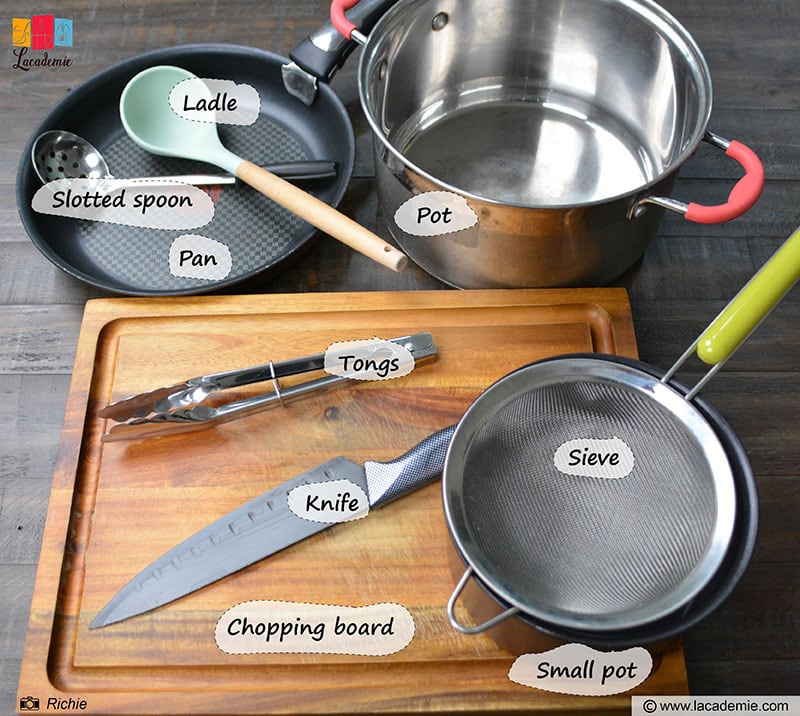
Ingredients
Don’t be discouraged by the rather long ingredient list. You can find most of them easily on Amazon or in Asian stores.
Main Ingredients
- Minced crab: Fresh minced crab will taste the best, but you can also use canned crab. Make sure that the product used hasn’t expired yet.
- Crab mustard: If you mince your own crab, remember to keep the crab mustard (or tomalley) that you find on the carapace.
- Bone-in pork ribs: Alternatively, you can opt for pork legs or other pork cuts that you like.
- Ground pork: For making the betel leaf rolls. Vietnamese people also use beef or a mixture of pork and beef. However, pork is the preferred choice for this recipe.
- Fish cake: Go for pre-fried fish cakes if you want to save time. Note that they won’t taste as good as the ones you fry at home.
- Pork fat: For making the fried pork fat. Feel free to omit it if you want to cut down on the fattiness.
- Dried shrimp: If you can’t find dried shrimp, dried squid makes for a great substitute.
- Banh Da noodles: There are two types: red and white. You can use either one, but the red type is the more traditional option. If you can’t find Banh Da noodles, you can use rice noodles instead.
Vegetables:
- Vietnamese water spinach: Also known as “morning glory”, a well-loved kind of vegetable in Vietnam.
- Shallots: For making fried shallots. You’ll also add one whole shallot to the broth.
- Tomatoes: Add a balanced sweet and tart flavor to the broth. They also lend their beautiful red color to your dish.
- Betel leaves: These leaves have a distinct flavor and aroma that is somewhat peppery. You’ll use them to marinate the pork and make the leaf-wrapped pork.
- Wood ear mushrooms: For marinating the pork.
- Saw leaves, scallions, and cilantro: For sprinkling on top of the noodle soup. You’ll also add the roots of scallions and cilantro to the pork broth.
- Shredded banana blossom, bean sprouts, peppermint, lime, chili pepper: Fresh vegetables to enjoy together with the noodle soup.
Spices:
- Fish sauce: Use Vietnamese fish sauce for the most authentic taste.
- Brown sugar, salt, and pepper: Basic seasonings that add sweetness and saltiness. You can adjust the amount used to your liking.
- Soup powder: For marinating the meat and seasoning the broth. Look for “Bột Canh” in Asian stores.
- Cashew oil: For cooking the crab mustard. I choose this specific kind of oil for its unique color.
- Olive oil: For frying the fish cakes and betel leaf rolls.
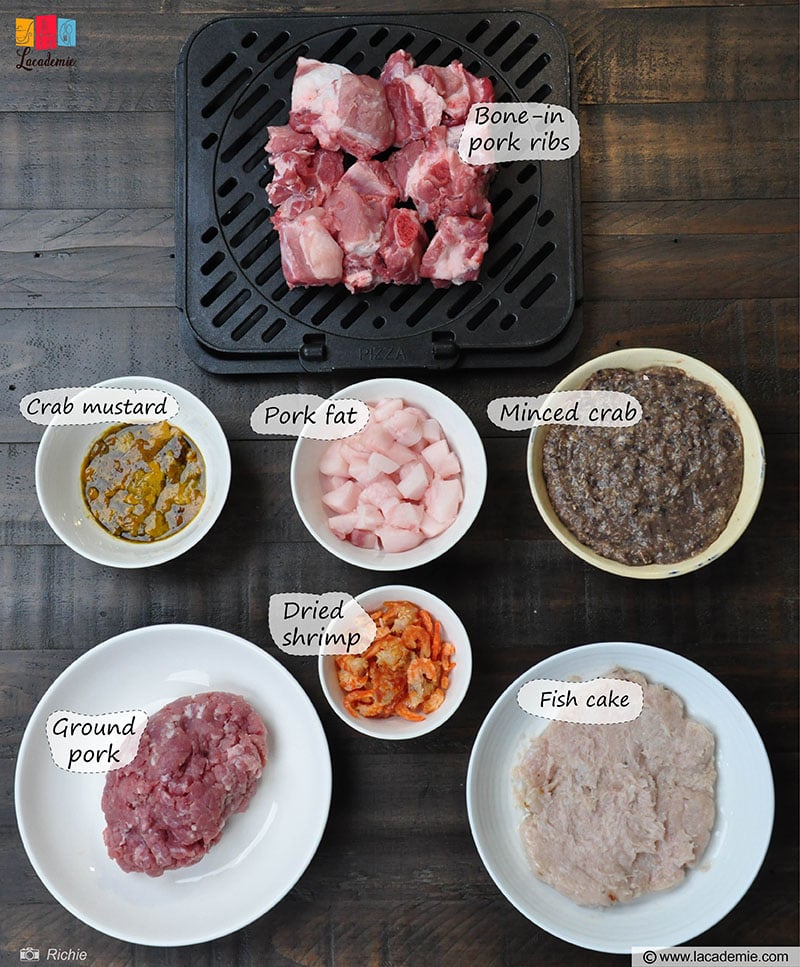
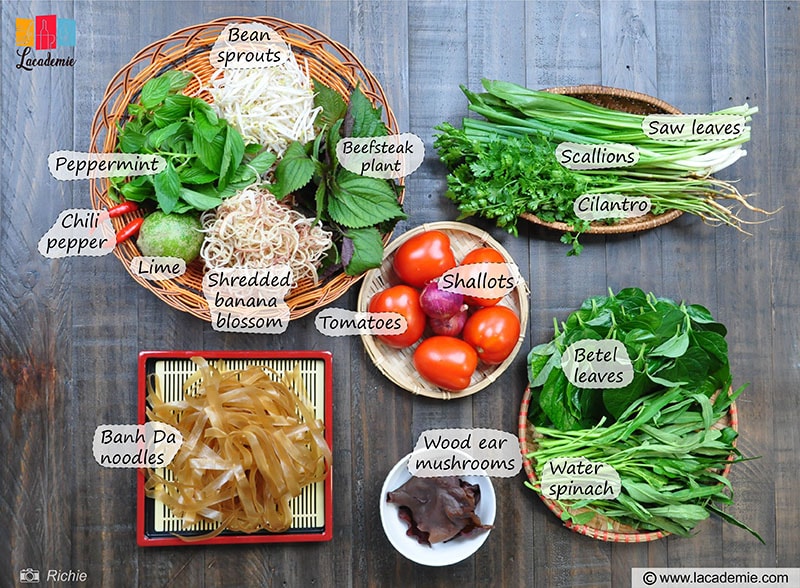
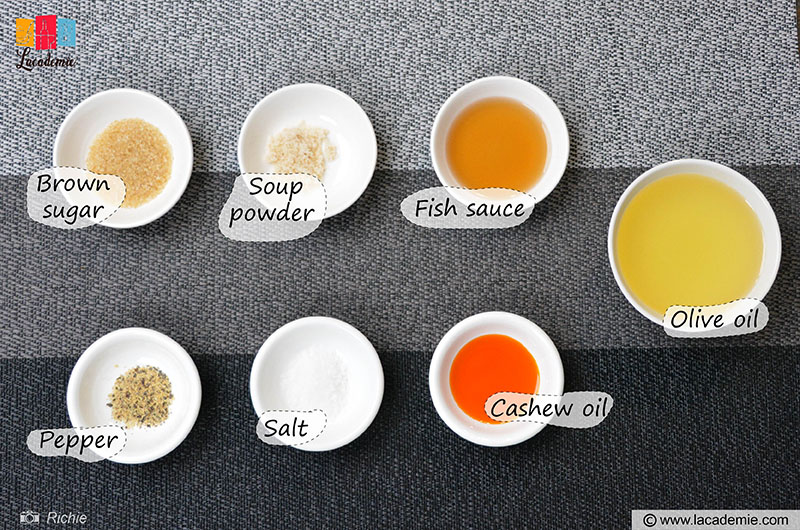
Step-By-Step Directions
Without further ado, here are the detailed instructions for cooking Banh Da Cua. Making this recipe is not the most straightforward process, so make sure that you follow my directions carefully.
Step 1: Prepare The Vegetables
Wash the pork bones and let them dry. Soak the dried wood ear mushrooms in water to soften them. Rinse the dried shrimp and allow them to dry.
Mince the saw leaves, cilantro, and scallions, keeping the roots of the cilantro and scallions for cooking the pork broth. Next, mince the betel leaves and wood ear mushrooms. Thinly slice the shallots.
Cut the tomatoes into quarters. Note that you shouldn’t cut the tomatoes into smaller pieces as they might break apart during cooking.
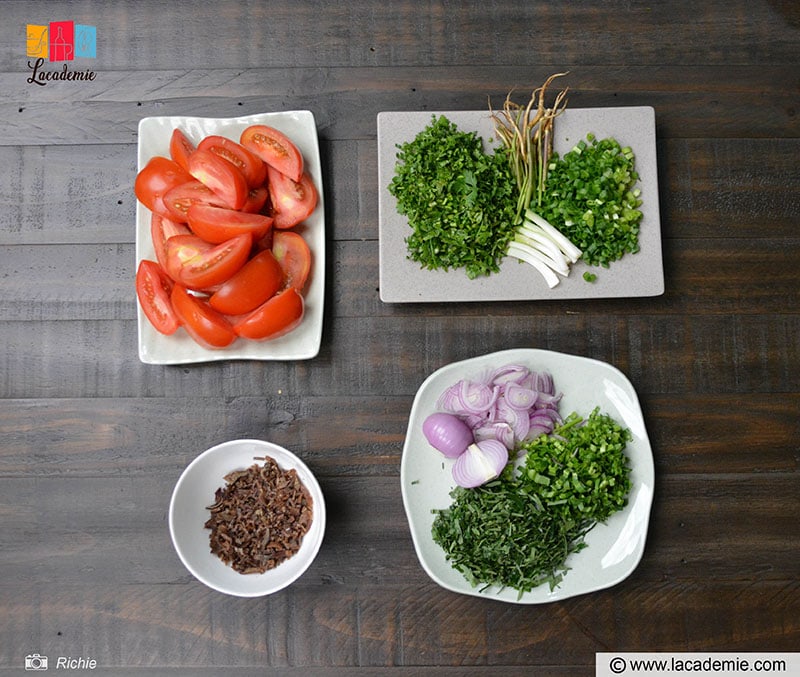
Step 2: Filter The Crab Meat
Put the minced crab into a small pot and prepare about 1.5 quarts (about 1.5 liters) of water. Gradually pour water into the pot and stir the crab meat with your hands (remember to wear food prep gloves). Pour the crab through a sieve into a larger pot to filter out tiny bits of crab shells. Repeat this step a couple of times.
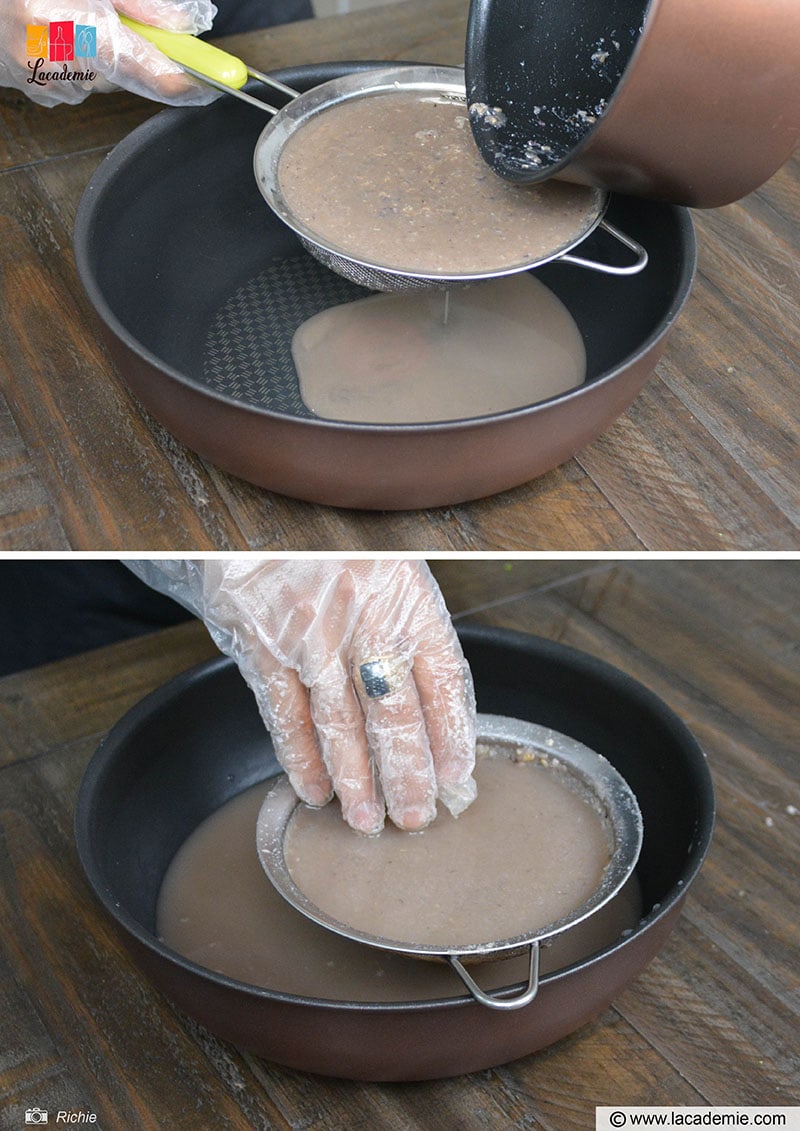
Step 3: Marinate The Ground Pork
Add the minced wood ear mushrooms and betel leaves to the ground pork. Season the mixture with 1 teaspoon of brown sugar, 1 teaspoon of pepper, and 1 teaspoon of soup powder. Mix well and let the meat rest for 10 minutes.
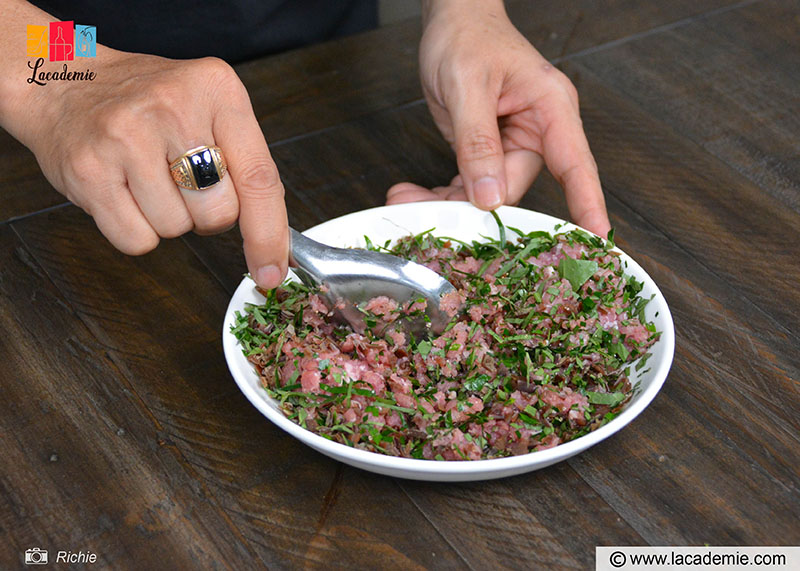
Step 4: Cook The Pork Broth
Blanch the pork ribs with 1 teaspoon of salt and scallions for 2 to 3 minutes. Then, transfer the bones to a cold water bath and clean them.
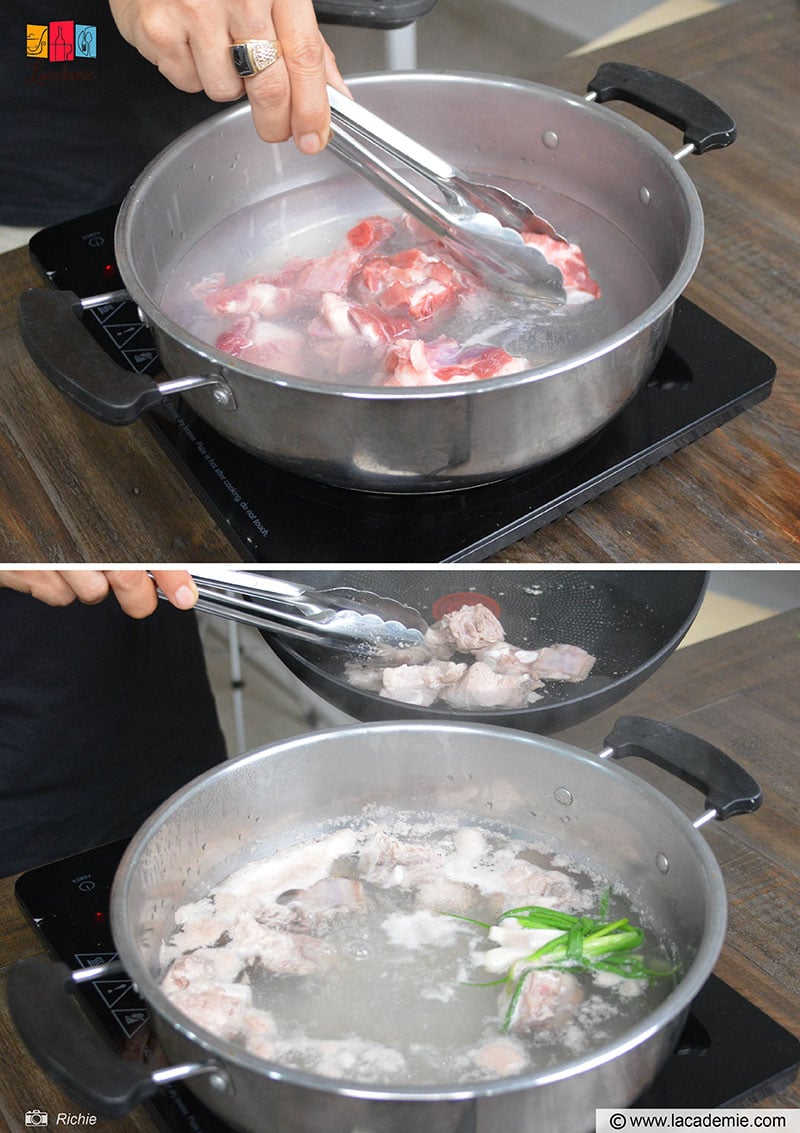
Next, add about 2.5 quarts of water (about 2.5 liters) to a pot together with 1 shallot and the roots of cilantro and scallions. Simmer for 30 to 45 minutes over medium heat.
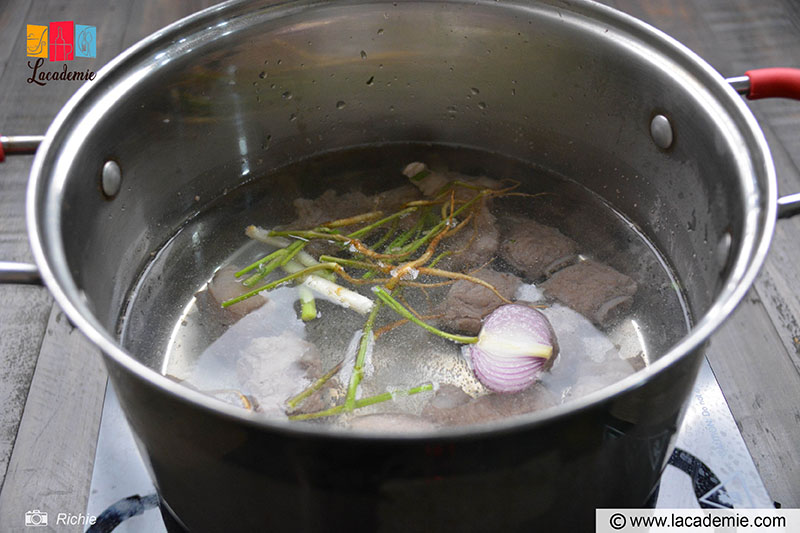
Step 5: Cook The Crab Meat
Place the filtered crab pot on the stovetop and add 1 teaspoon of salt. Bring the mixture to a boil over medium heat. Use chopsticks to lightly stir the crab to keep it from sticking to the bottom of the pot. Once boiled, set the heat to low.
After 3 to 5 minutes of cooking over low heat, transfer the crab meat that floats on the surface to a bowl and turn off the stove.
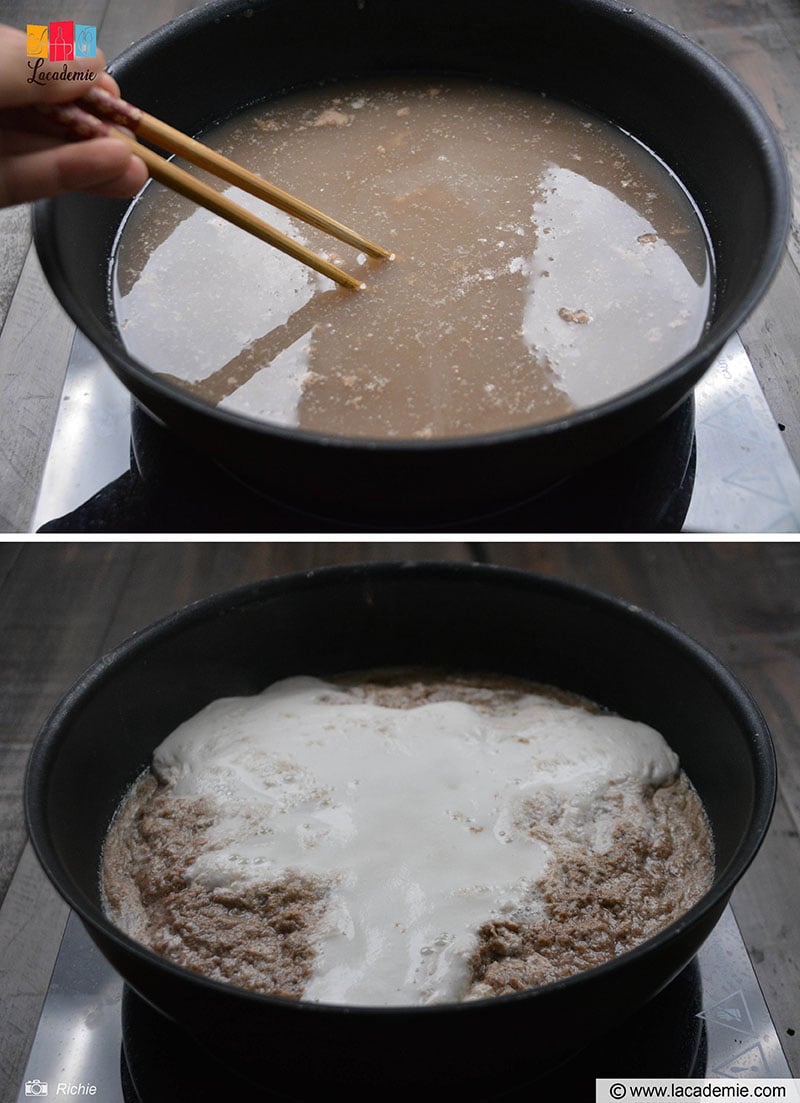
Step 6: Make The Betel Leaf Rolls
Spread a betel leaf on a chopping board on its glossy side. Place some ground pork on the leaf’s surface and roll it up carefully. Use the petiole to lock the roll and prevent the meat from falling out. Repeat this step for the remaining leaves and pork.
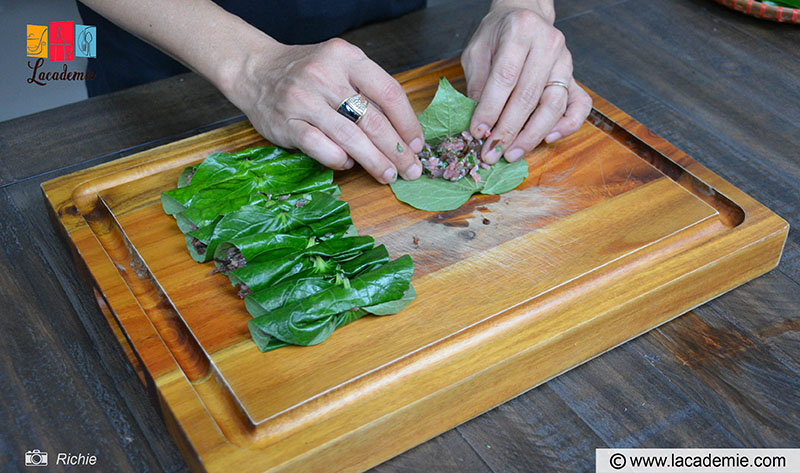
Pour some olive oil into a heated pan and fry the fish cakes until they turn golden brown on all sides. Transfer the fried fish cakes to a plate lined with paper towels to absorb the oil.
Add the betel leaf rolls into the same pan and fry them for 5 to 10 minutes or until all sides are evenly cooked. Transfer them to another paper towel-lined plate.
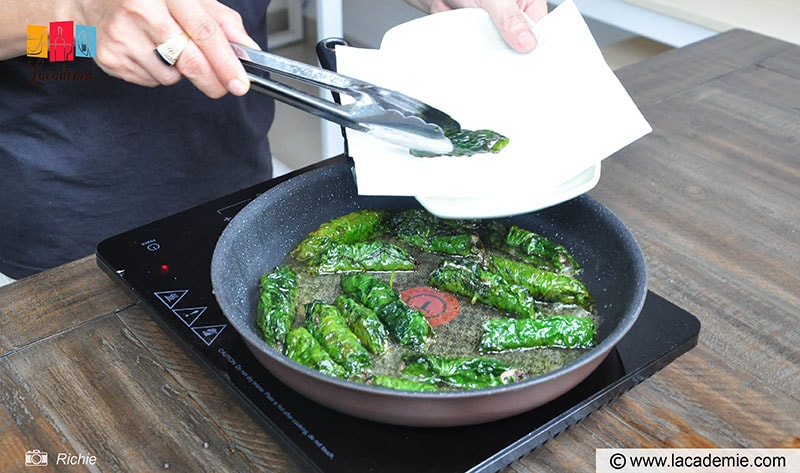
Step 7: Fry The Pork Fat
Add the pork fat to a pan and stir for 10 to 15 minutes over medium heat or until the fat turns golden and crispy. Set aside.
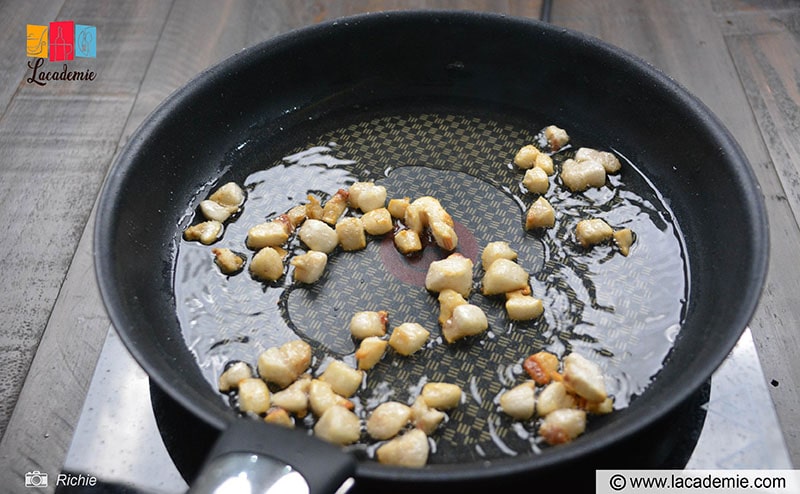
In the same pan, add the sliced shallots and stir until they turn light yellow. Set aside.
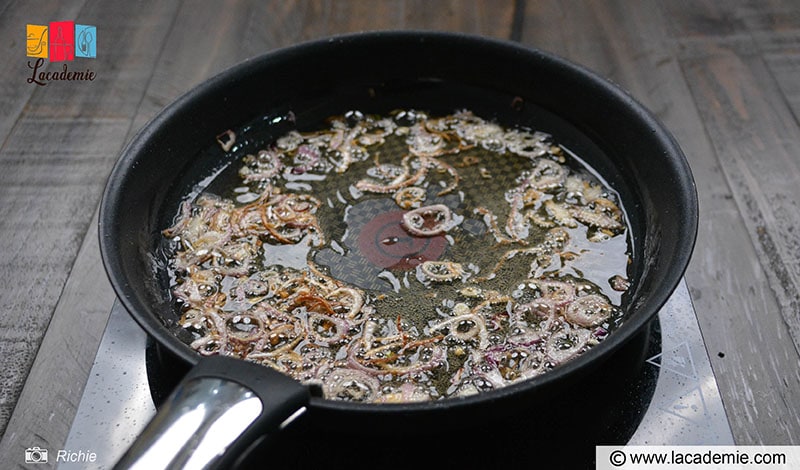
Step 8: Make The Crab Broth
Add the tomatoes to the same pan and stir lightly. Then, add the dried shrimp and continue stirring for 2 to 3 minutes. Pour the tomatoes and shrimp mixture into the pot that you used to cook the crab and simmer it over low heat.
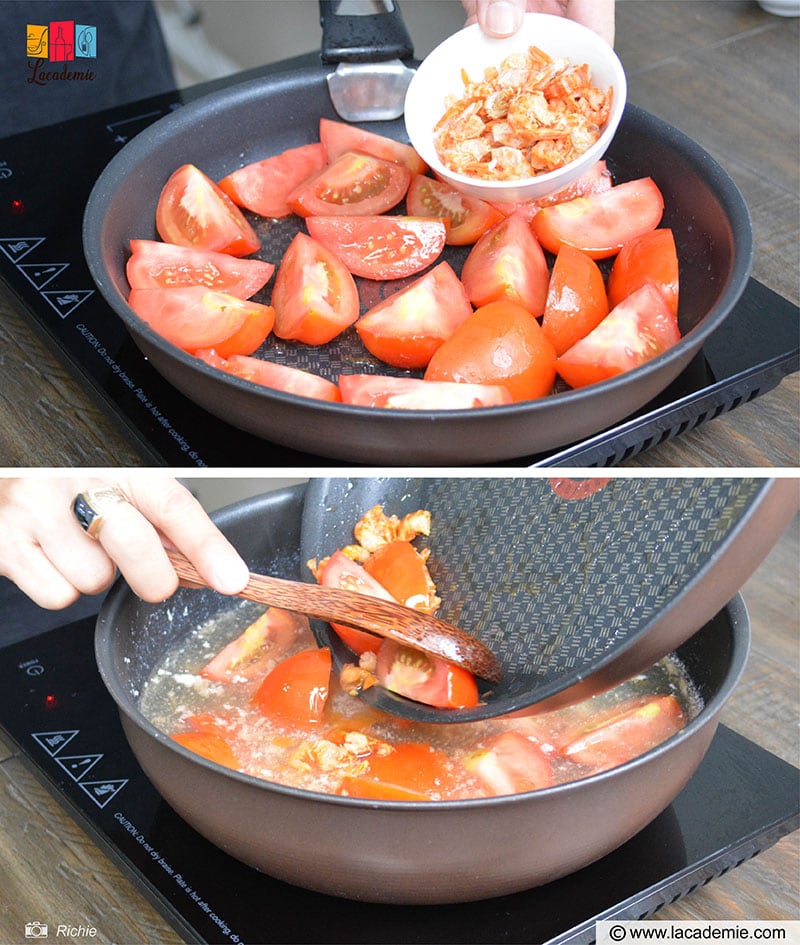
Next, pour cashew oil into a heated pan and add the crab mustard. Stir lightly for 3 to 5 minutes on low heat. Then, add the crab mustard to the crab broth pot and simmer over low heat.
Season the broth with 1 tablespoon of fish sauce, 3 teaspoons of soup powder, and 1 teaspoon of brown sugar. Feel free to adjust the amount to your taste.
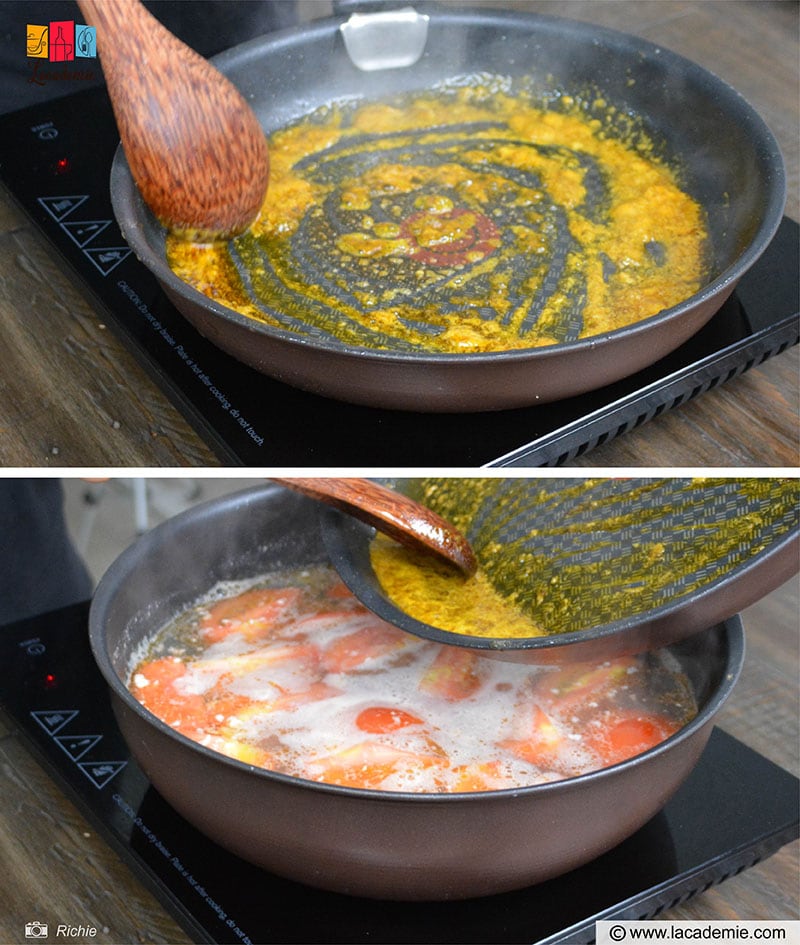
Pour in the pork broth and keep on simmering over low heat to keep the stock heated.
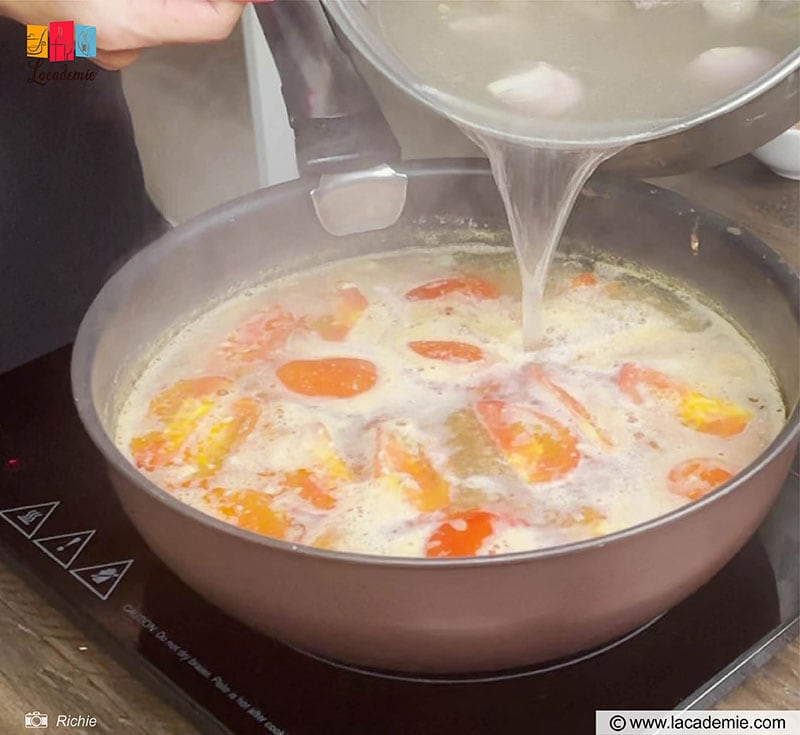
Step 9: Time To Serve!
Blanch the water spinach briefly and transfer it to a cold bath to maintain its crispiness and color.
Rinse the noodles about 10 minutes in advance. Then, blanch them in boiled water for 30 seconds.
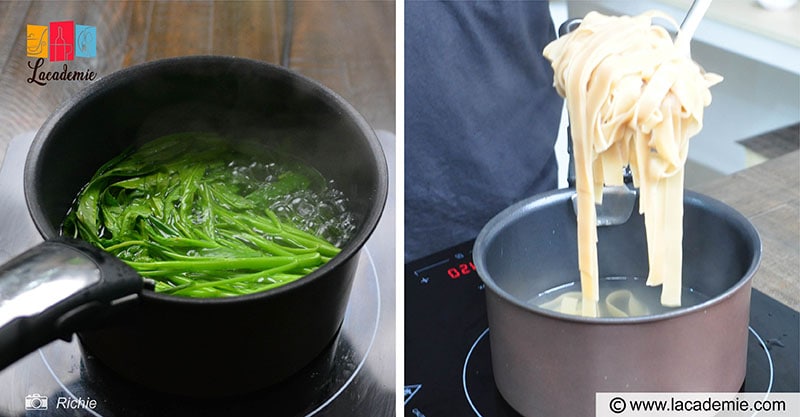
Add the noodles to a bowl and place the fish cakes, betel leaf rolls, crab meat, and pork ribs on top of them. Pour in the broth and drizzle the noodles with some fried pork fat, fried shallots, scallions, and cilantro. Serve with fresh vegetables on the side.
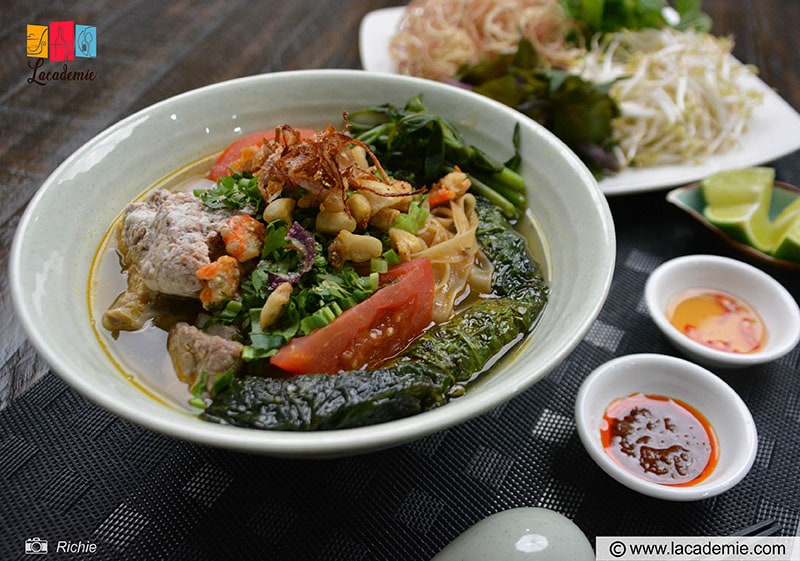
Don’t Miss These Handy Tips
If you want to improve the flavor of this already-delicious dish, here are some useful tips for you.
- Besides rinsing the noodles, you can also soak them in cold water for about 3 to 5 minutes before blanching.
- Feel free to add more fish sauce or freshly squeezed lime juice to your noodle soup for a richer taste. A few slices of chili pepper or some Shacha sauce are great additions if you like a spicier dish.
- In addition to fresh vegetables, I love enjoying my Banh Da Cua with some bagel twists (Banh quay).
- For the leftovers, store the noodles and the broth in different containers and keep them in the fridge for up to 3 days.
Experience The Food Culture Of Northern Vietnam
Banh Da Cua is the perfect first step to exploring the amazing cuisine of Northern Vietnam. You can enjoy it as a hearty morning dish, lunch, or dinner. No matter what time of the day, a bowl of Banh Da Cua will never fail you.
If you like this dish, I’m sure that you will also be interested in trying other delicious, simple-to-make recipes that I’ve posted. So don’t hesitate to like and share this recipe for more content like this in the future. Have fun cooking, and see you again soon!
Nutrition Facts
8 servings per container
- Amount Per ServingCalories688
- % Daily Value *
- Total Fat
23.9g
36%
- Saturated Fat 5.3g 25%
- Cholesterol 104mg 35%
- Sodium 1379mg 58%
- Potassium 701mg 21%
- Total Carbohydrate
77.3g
26%
- Dietary Fiber 3g 12%
- Sugars 2.1g
- Protein 39.3g 78%
- Calcium 127%
- Iron 10%
* The % Daily Value tells you how much a nutrient in a serving of food contributes to a daily diet. 2,000 calories a day is used for general nutrition advice.

